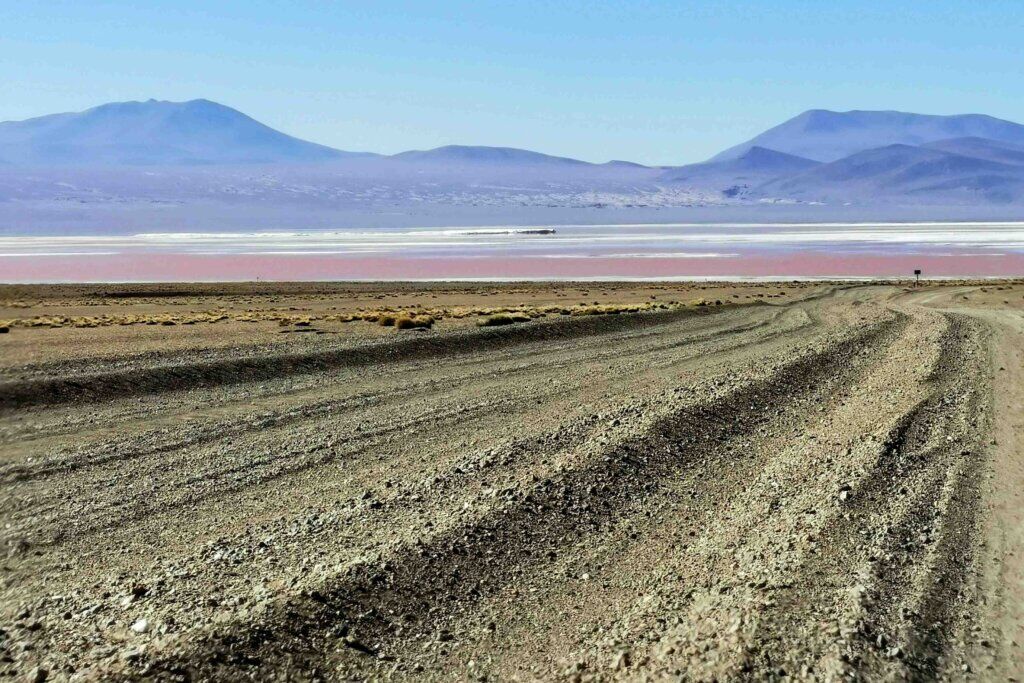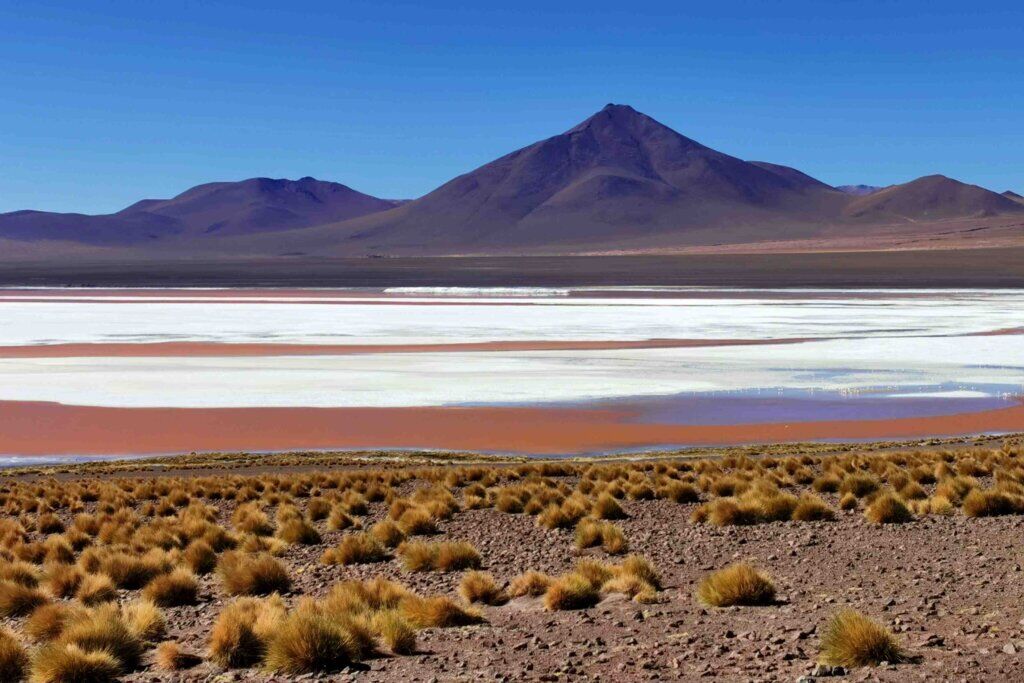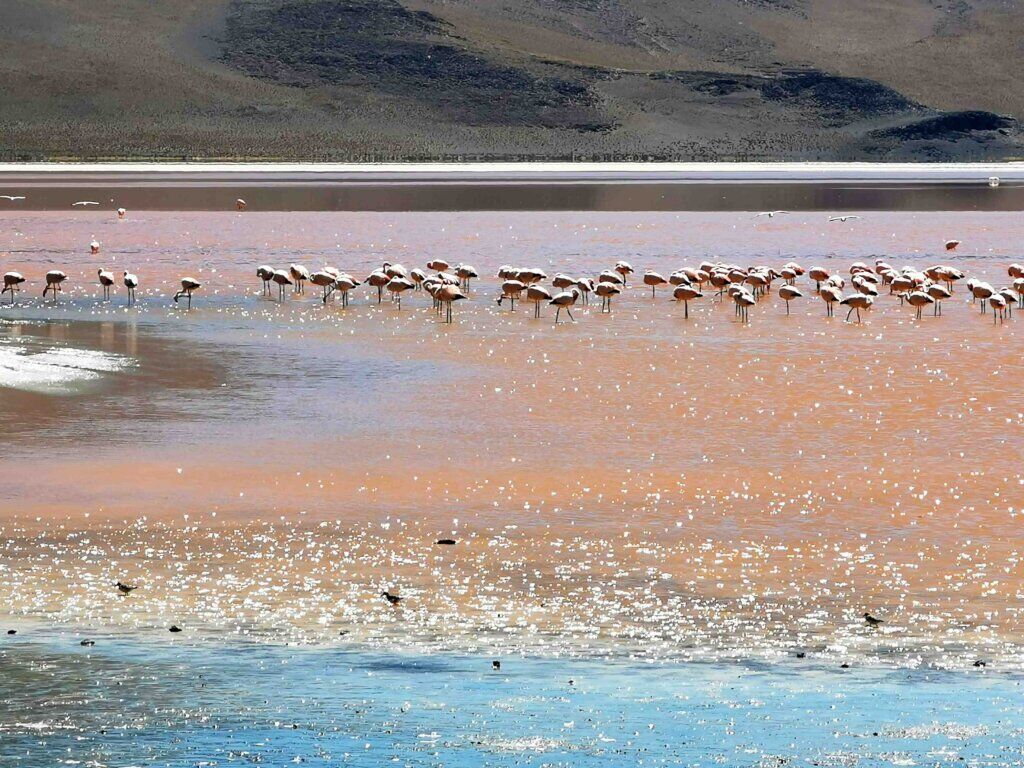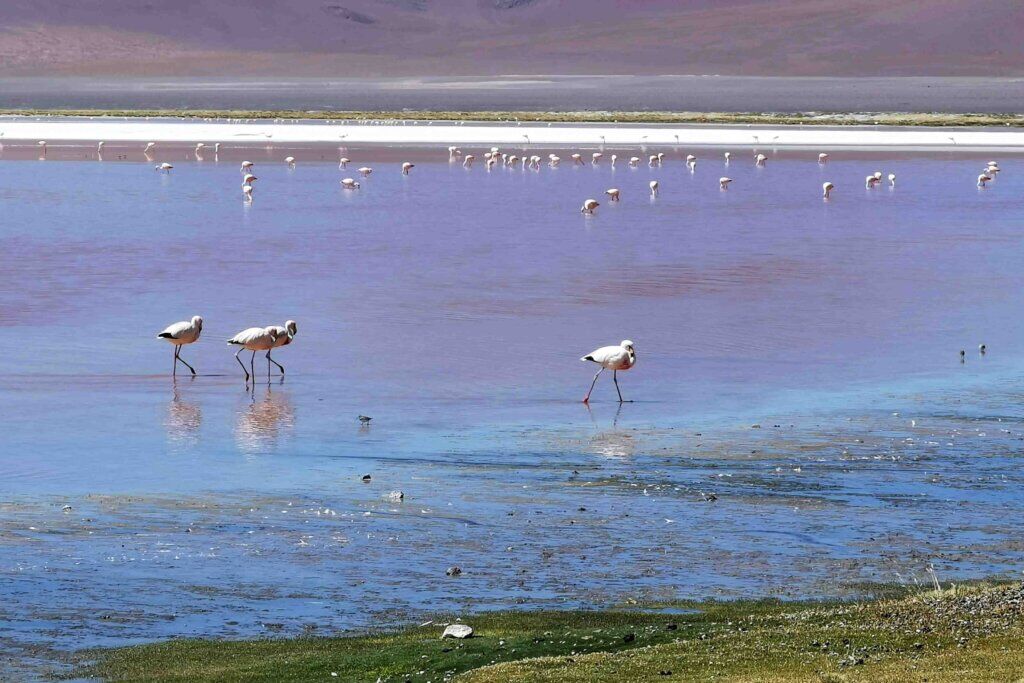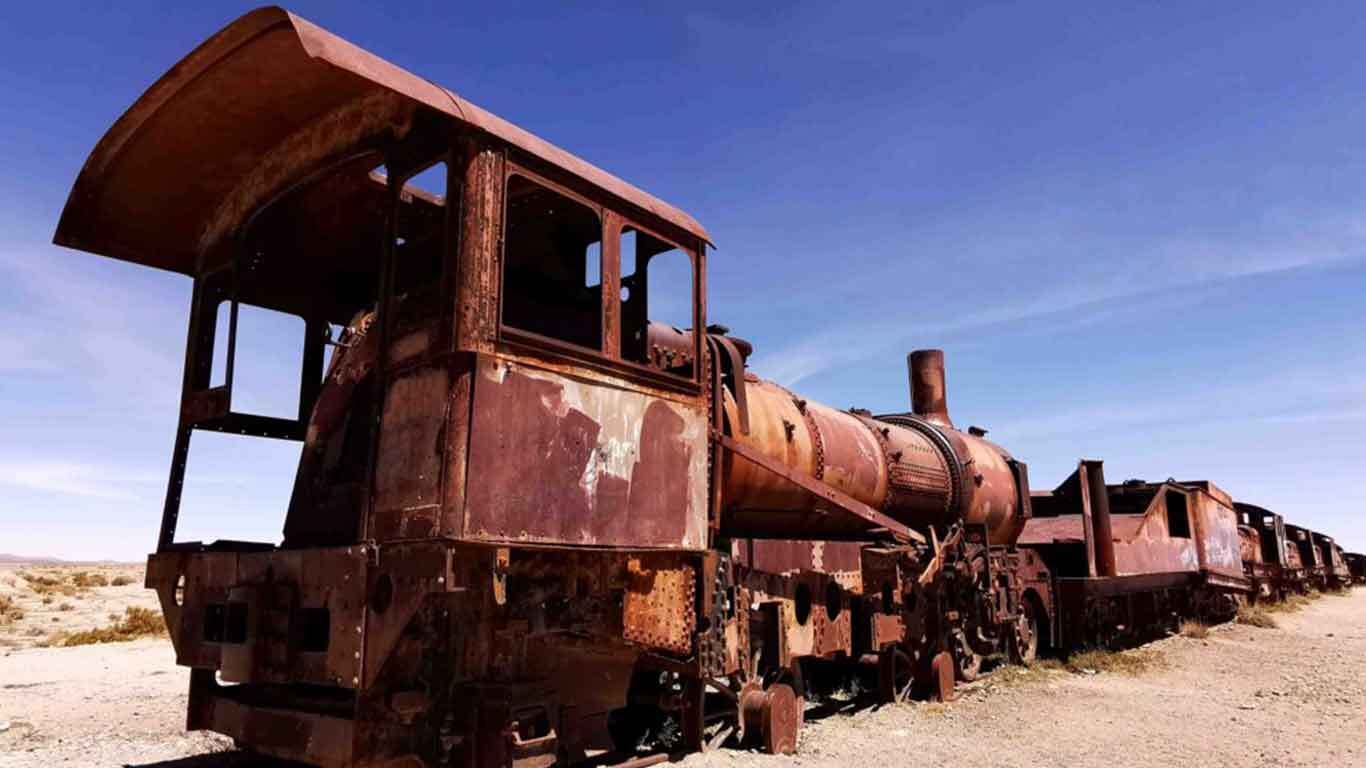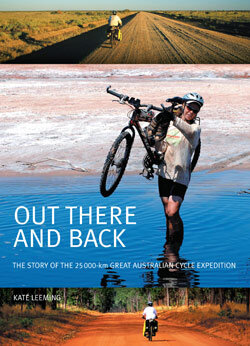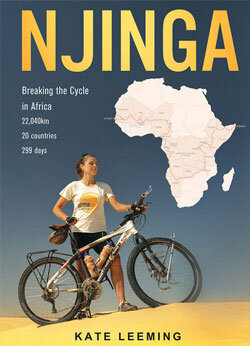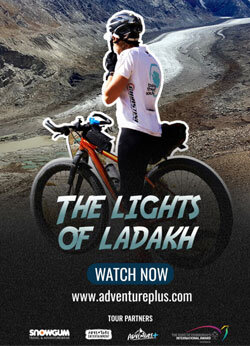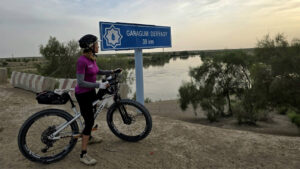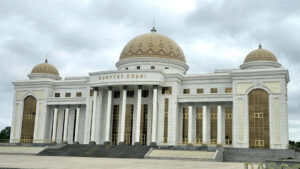EPISODE 6: 18th – 23rd MARCH | UYUNI TO LAKE COLORADO | TOTAL DISTANCE 1.227 KM
Before leaving Uyuni, I hadn’t mentioned the reason for its existence – the railway. The town was established in 1893 when the railway line was built to link the nearby silver mines to the coast at Arica. From there it was linked to other places in the land-locked country. On the outskirts of Uyuni is the enigmatic Train Cemetery. Two long lines of engines have been left to corrode on a pair of disused tracks. They all have character and stories to tell beneath the layers of rust.
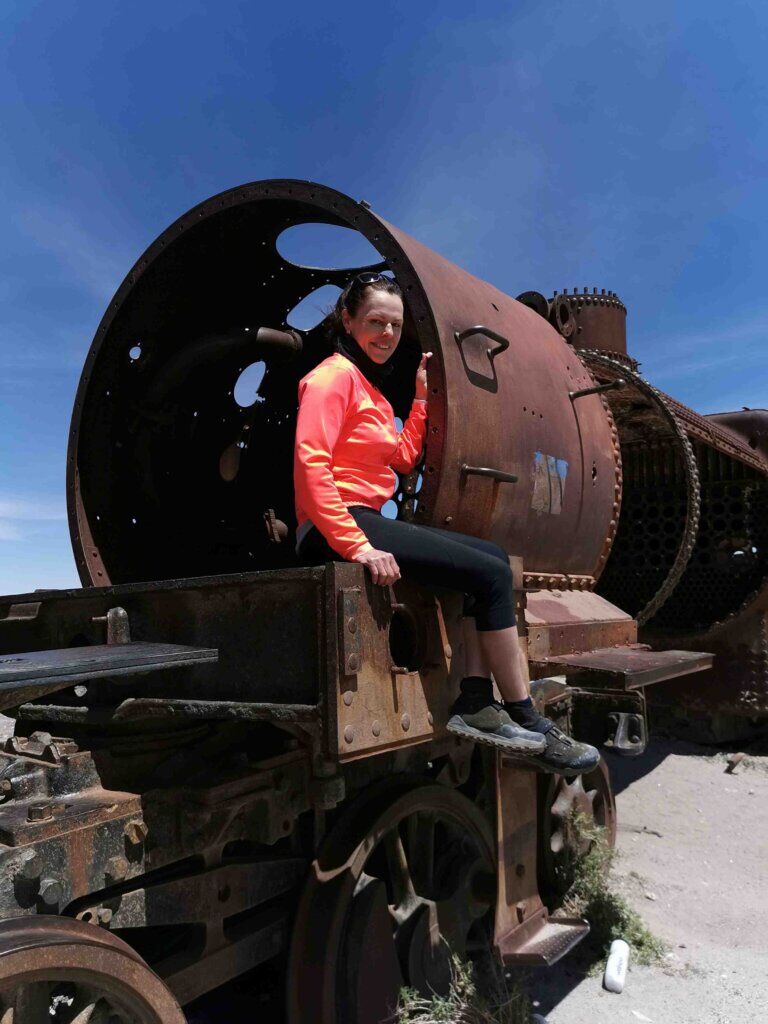
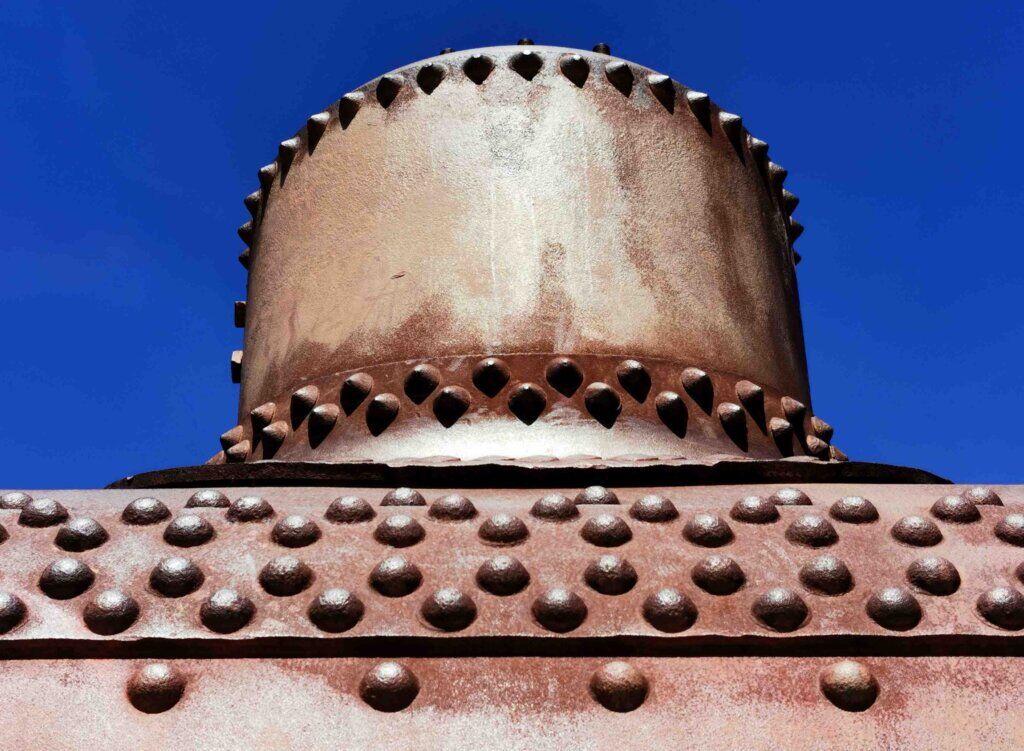
Bidding farewell to Uyuni for the last time, I cycled southwest around the southern perimeter of the Uyuni Salt Pan. The salty ground made for the pretty fast unsealed road. It was similar to the salt road I had cycled on in Namibia, just not in the same pristine condition. To my north, a couple of islands appeared to float above the mirage of the salty wetland.
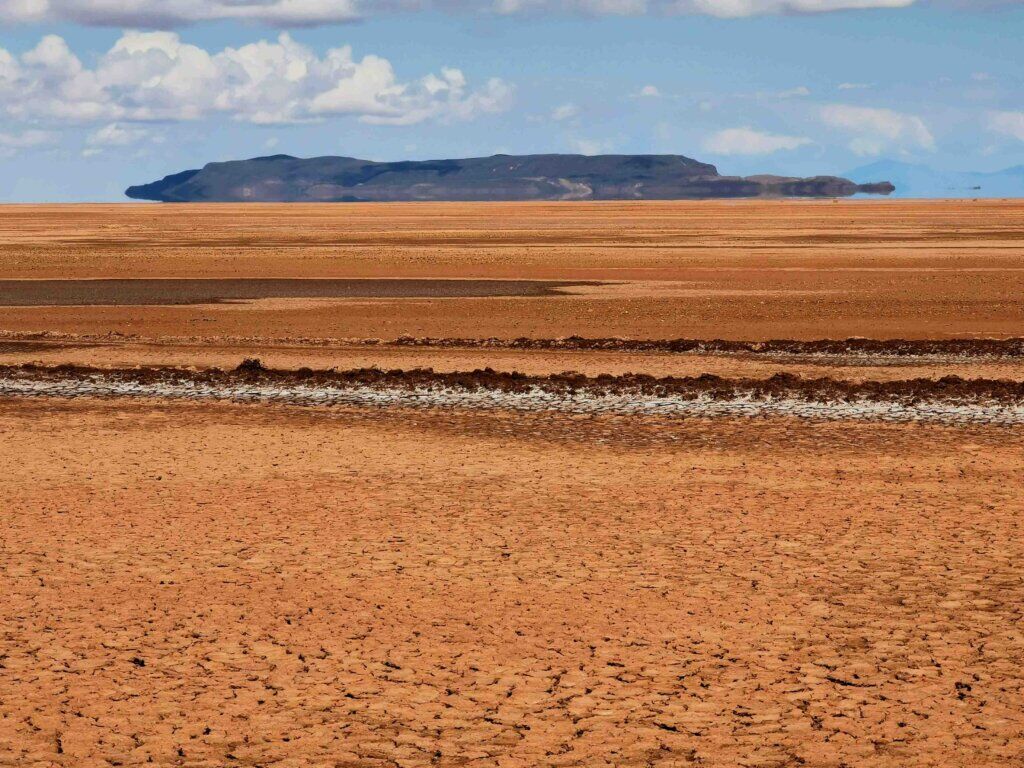
After 86 km I reached the most significant town in the area, San Cristobel, maintained by the international silver mining company that extracts silver and other minerals from the mountain behind the town.
The road was in various stages of being upgraded to a sealed road and I was able to slip along the roadworks and semi-prepared surfaces for the second half of the day. (Vehicles had to take the side roads). Apparently the road has been under construction for two years so far. Knowing that most of this section of the journey was going to be on rugged surfaces, I was keen to get as much distance as I could under my belt and managed 121 km before stopping win the small mining-related village of Culpina.

Just 15 km into Day 22 and Rolando stopped beside a memorial to a battle fought in 1879 between Bolivia and Chile during the Pacific Wars. The Battle of the Canchas Blancas (White Fields) was when Bolivia repelled Chilean troops, sending them into retreat over the mountains. Bolivia was usually considered the underdog in these wars, with a much smaller population and smaller defence force, so the win over Chile is always remembered as an important international victory.
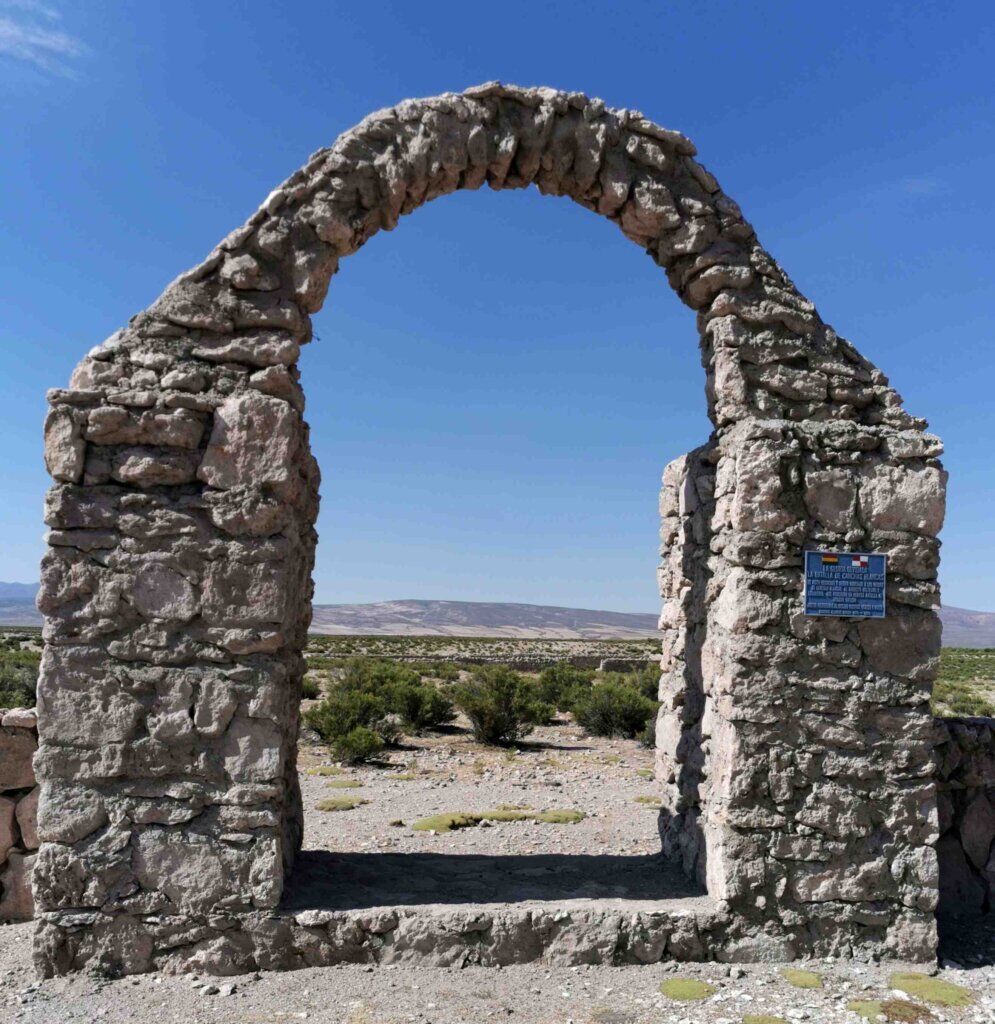
The mountains were always looming and after 25 km, it started to climb, from 3828 m in Villa Alota to 4499 m later in the afternoon. One of the most spectacular parts of my ascent was pedalling through a huge lava field where the ancient floe had weathered into fantastic shapes, dwarfing me as I laboured up the slope.
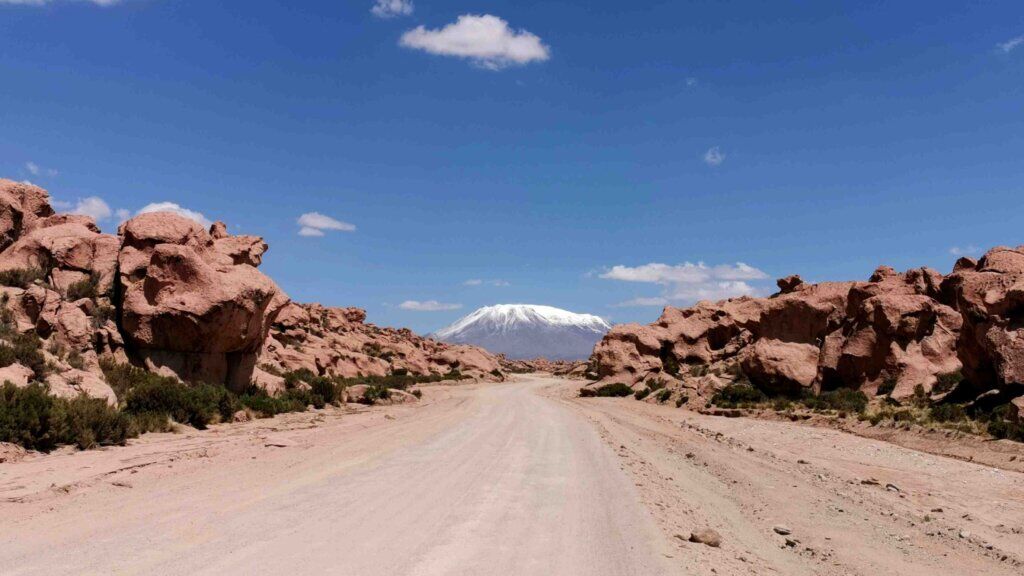
It wasn’t just the altitude testing me, I seemed to have ferocious headwinds and sidewinds all day, even when I changed direction! It was a day with no easy wins – resistance all the way; wind, sand, altitude, rocky sections, steep inclines…
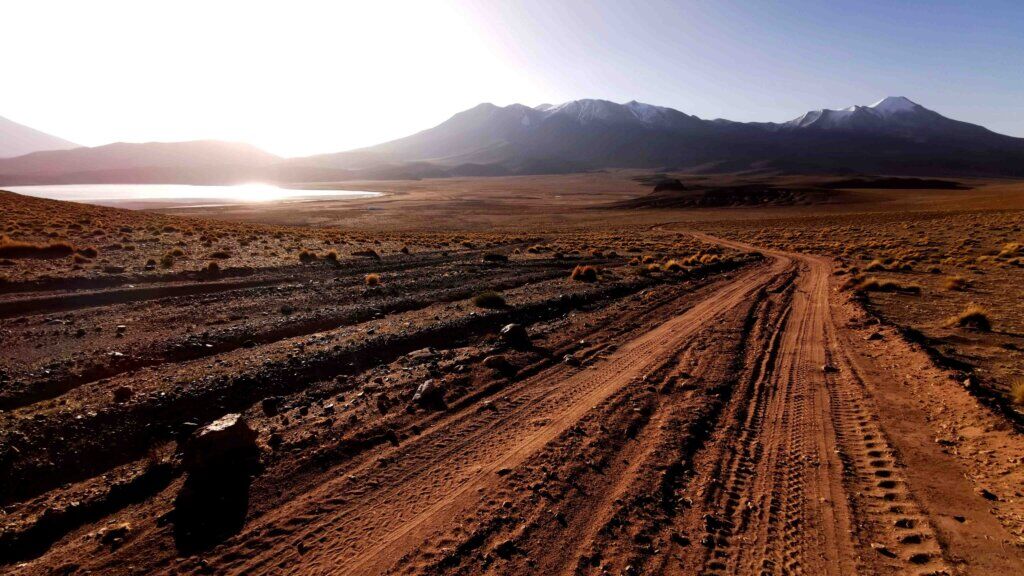
Eventually I reached Lake Hedionda (translates as the “stinky lake” due to the sulphurous odour from the lake. I was getting very cold as the sun disappeared behind the mountains, but I could appreciate my first view of pink and white Andean flamingoes foraging in the shallow, saline waters.
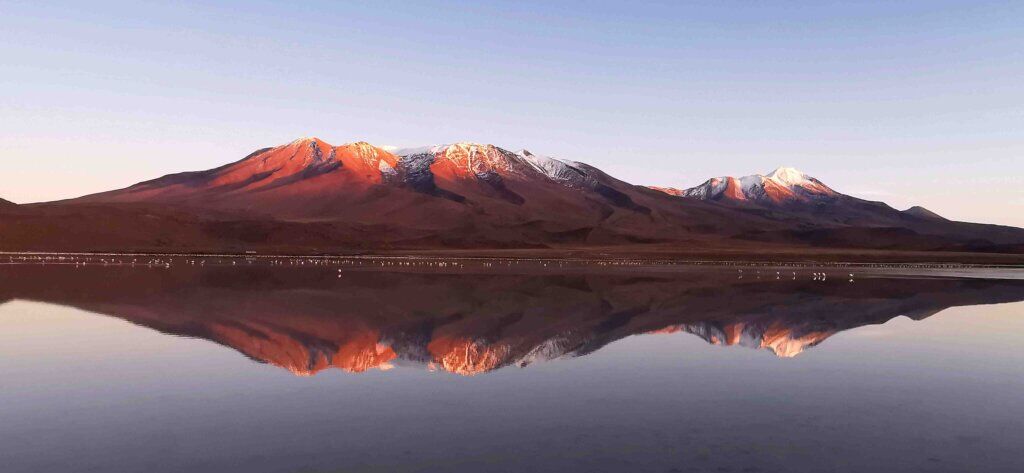
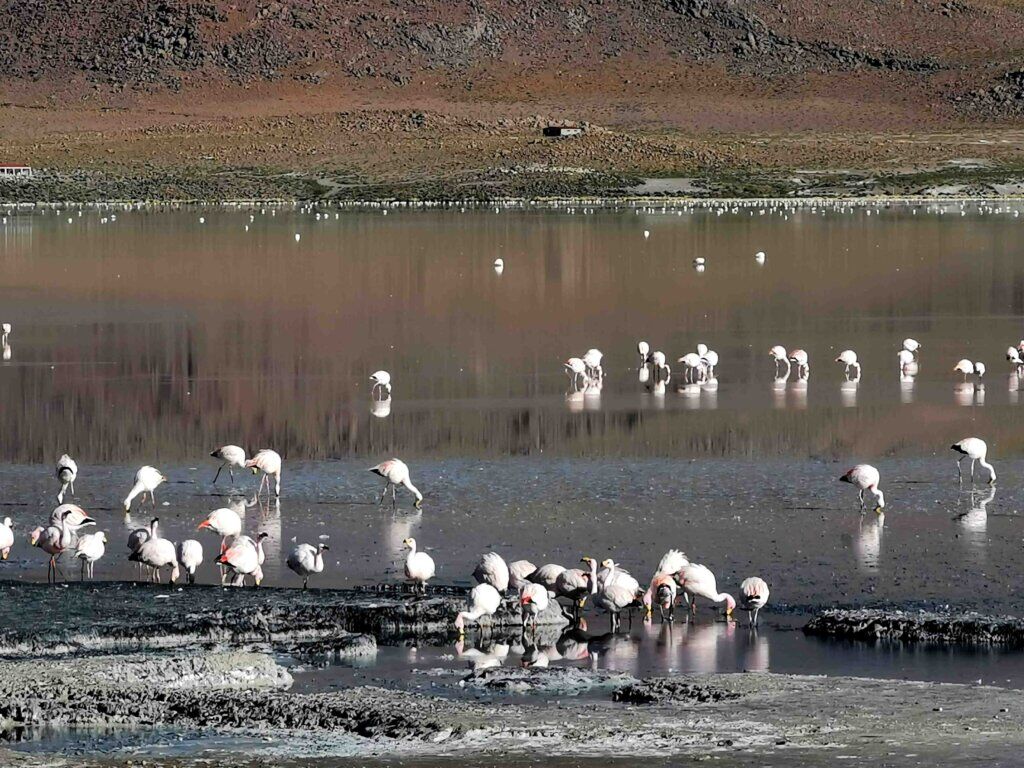
We ended up camping on a concrete surface on the grounds of an Eco-Lodge – 87 km done in about 7 hours of brutal cycling.
From Lake Hedionda, we thought it was about 71 km to Laguna Colorada, but it was difficult to tell exactly because the path was not a made road, it was just wheel tracks made by 4WD vehicles, taking the most direct route.
The first 7 km was spectacular, passing three more saline lakes, the most perfect was Laguna Honda – I had seen images of it, but the experience exceeded the images!
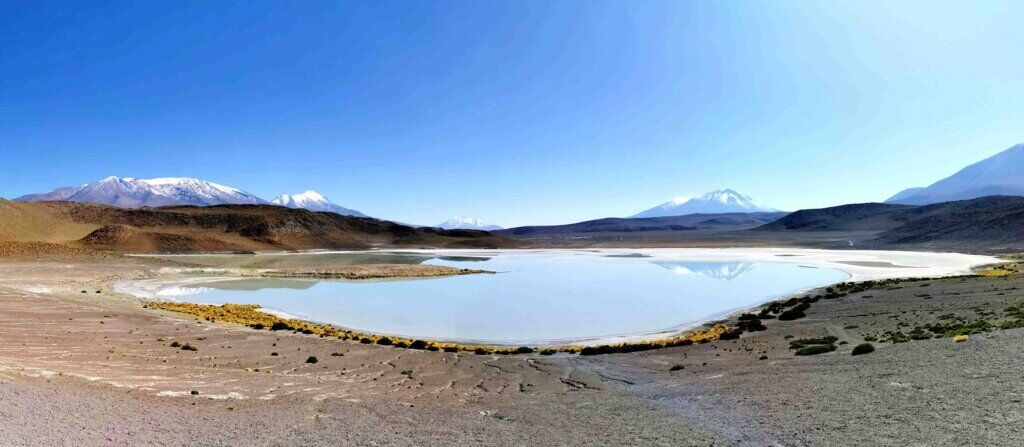
From there, I passed another dry salt lake and crossed a stoney plain before the road started to ascend. If I didn’t have the wind at my back I would have really struggled to make it. The gradient wasn’t steep, averaging around 3%, but it was relentless and the tracks were corrugated, soft and at times, stoney. I started at 3823 m and after about 20 km had risen to 4550 m. I came through a small canyon and then followed a gorge, still rising for several kilometres, with water from a spring trickling down the track. Through the gorge and the track continued to rise, topping out at 4668 m.
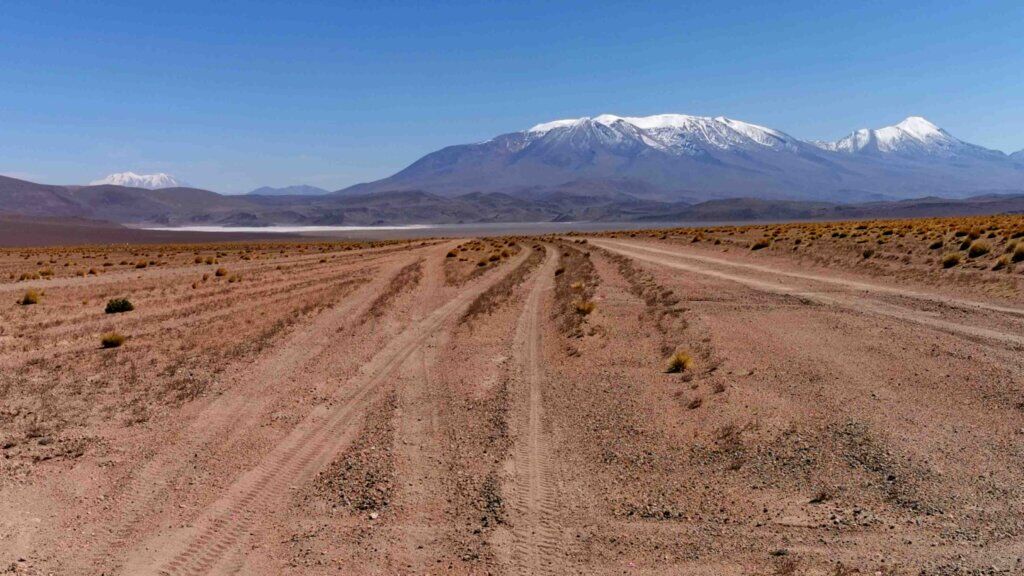
The other side was sandy as I descended about 200 m, passing a small army barracks and then across a gibber (stoney with soft sand underneath). This was dreadful! I could only manage about 7 km/h, getting shaken to pieces by the loose stones and corrugations. Vehicle tracks striated the slopes and I was always trying to find a better surface, but all in vain.
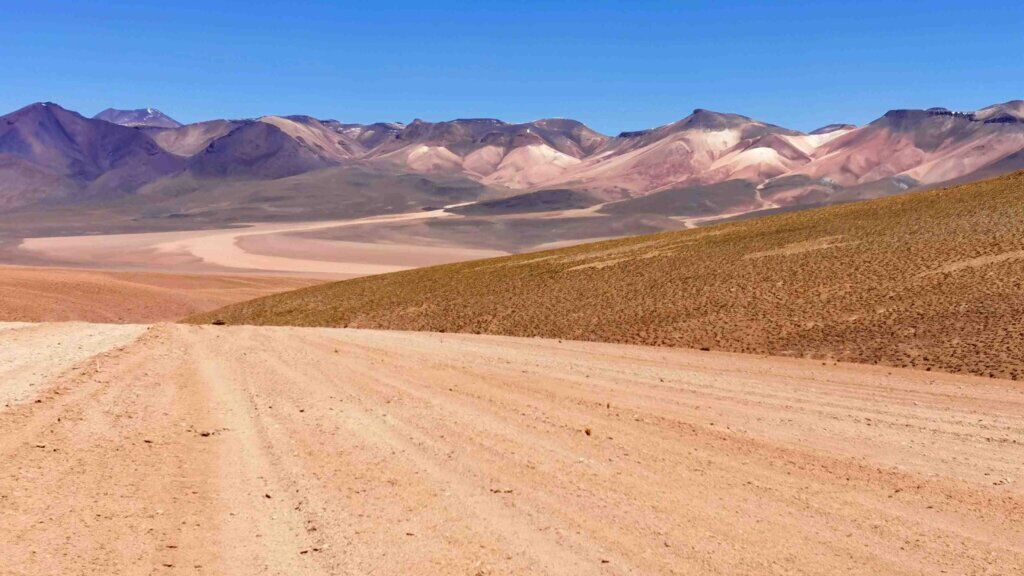
Finally working my way through that, there were a couple of surprising features.

In a rock escarpment I saw my first vizcacha, a wild Bolivian rabbit with extra thick fur for the cold. The rocks also supported great examples of the llareda plant, which looks like a giant moss, but it only grows 1 mm/year. The plants I was looking at were probably more than a thousand years old. The locals say a llareda plants burns for longer than coal.
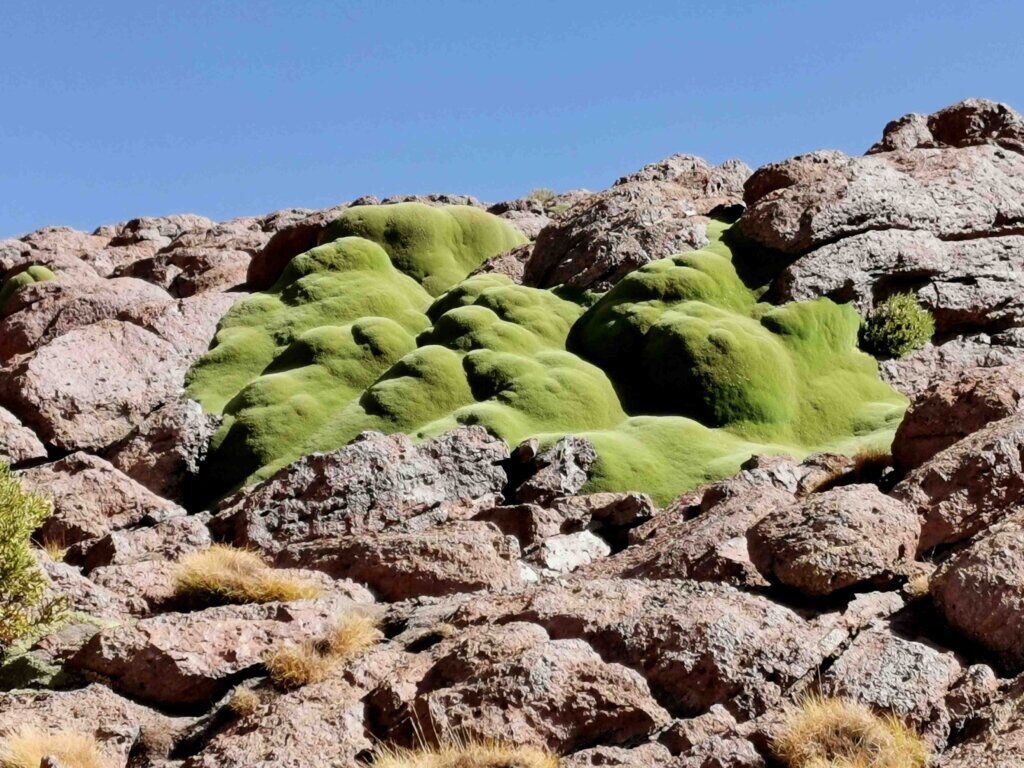
The tracks converged to become a road, but the surfaces were terrible. 4WDs simply speed over the top of the very deep corrugations that have shaken many vehicles and motorbikes to pieces over the years. By the time I reached the Rock Tree in the late afternoon, I too was nearly broken. There were many tracks running parallel to the main track, made by vehicles in search of a smoother path. I was often tempted to try the other tracks, but they were always very sandy and would be slower than the bumpy firmer surfaces.
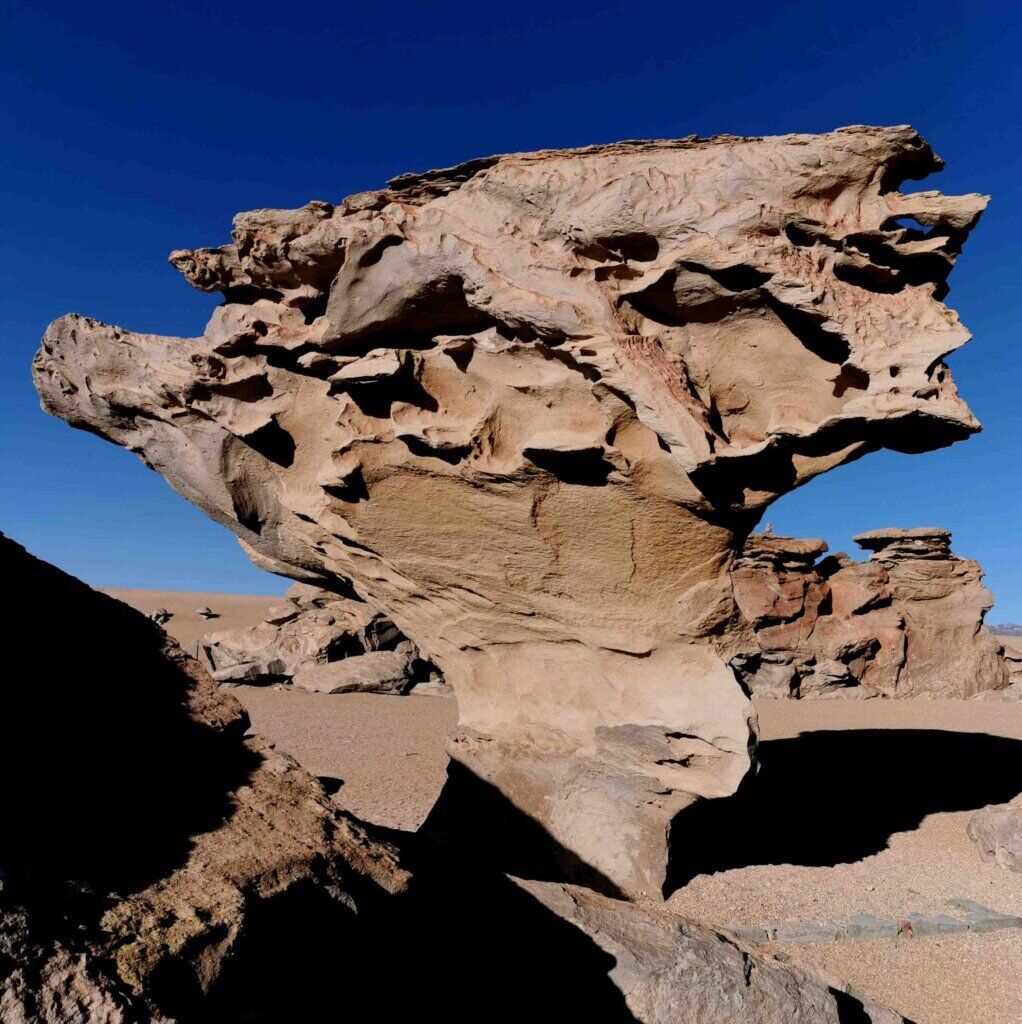
I reached my target distance but not the destination. Laguna Colorada was still 12 km away. We called it quits and drove to the accommodation and I finished off the distance in the morning. That was a brutal day!
Lake Colorada is a jewell in the southwest of Bolivia. It also demarcates where the Altiplano finishes and the Martian-like Lipez Mountains start. The lake’s famous red colour comes from an endemic type of microbe that also helps the local flamingoes maintain their pink colour.
